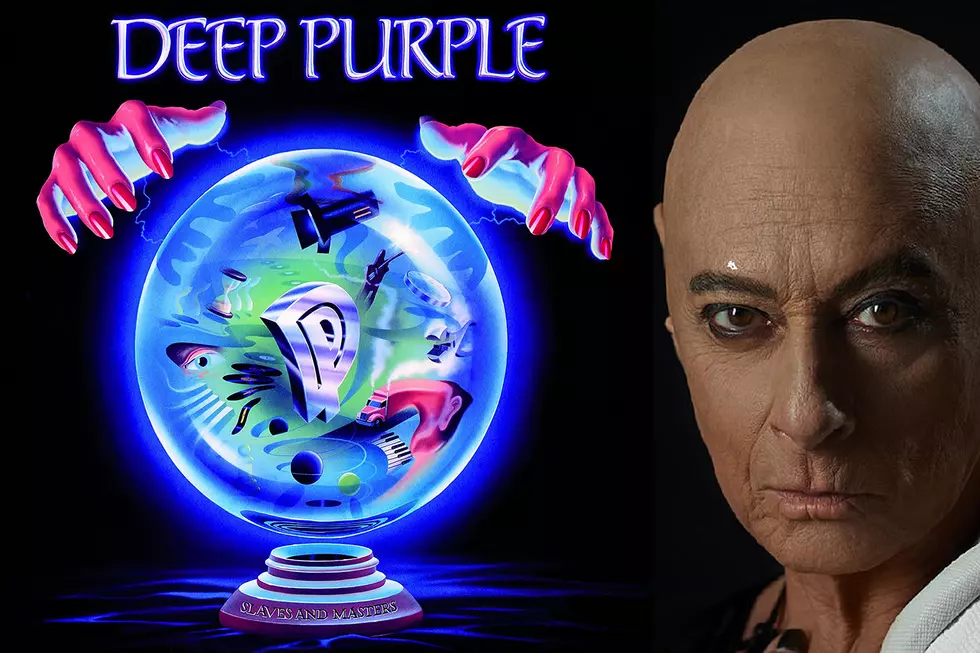
When Deep Purple Reached the End of an Era on ‘Stormbringer’
In a classic example of life imitating art, storm clouds were brewing as Deep Purple unveiled their ninth studio album on Nov. 16, 1974.
The irony is that only six months earlier, the band had triumphed against adversity yet again, when they successfully replaced vocalist Ian Gillan and bassist Roger Glover with David Coverdale and Glenn Hughes, respectively, before delivering one of their all-time strongest albums in the formidable Burn.
But then, just as sure as winds will sometimes change course, Deep Purple’s mercurial guitarist Ritchie Blackmore suddenly grew disillusioned, as new boys Coverdale and Hughes began revealing their own musical interests during sessions for Stormbringer.
Specifically, the pair shared a fondness for American R&B, which Hughes had already put to good use with his prior band, Trapeze. Now it was manifesting itself on soulful cuts like "Love Don’t Mean a Thing" and the spectacularly funky "You Can’t Do It Right."
Furthermore, just as they had done on Burn, Coverdale and Hughes genially alternated lead vocals on most all of Stormbringer’s songs. Hughes only took full honors on the suitably hymnal "Holy Man," while Coverdale showed off the remarkable emotive range of his voice on the album’s lush closing ballad, "Soldier of Fortune."
Every track featured typically stellar and versatile guitar work from Blackmore, but he was already checking out – and reportedly for the most trivial of reasons: because his bandmates refused to cover an obscure Quatermass song named "Black Sheep of the Family."
Deep Purple’s more familiar sonic traits still surfaced on the forceful title track (introduced by Jon Lord on synthesizers), the hard-driving "Lady Double Dealer" and "The Gypsy," but a few sleepwalked performances ("Hold On," "High Ball Shooter") fell well short of the group’s typical high standards. It didn't help that the overall change of direction left many fans confused.
All these factors contributed to making Stormbringer an undeniable letdown following the inspirational heights achieved by Burn. Deep Purple’s future was in serious doubt after Blackmore officially departed midway through 1975 to launch his new band Rainbow. (They promptly recorded that Quatemass tune on their debut album, by the way.)
Deep Purple, meanwhile, tried to prove the naysayers wrong by recruiting the amazingly talented Tommy Bolin and bouncing back just as quickly with 1975’s Come Taste the Band — a fine effort in its own right, but not quite Deep Purple as most people saw them in light of Blackmore’s absence.
Stormbringer’s cover-art hurricane was looking more prophetic every day.
Rock's 100 Most Underrated Albums
Whitesnake Video Star Tawny Kitaen's Rock ‘n’ Roll History
More From Ultimate Classic Rock









